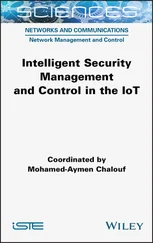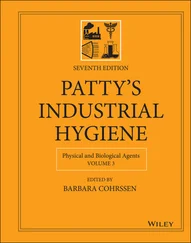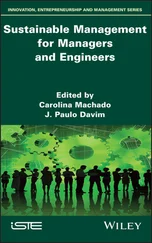3 DEFINITIONS OF PRODUCT STEWARDSHIP
In general, there are no specific or consensus definitions of PS. In fact, some use the term product safety to describe the same set of activities and principles. The general principles involved and the specific elements of a definition vary from private organizations to government agencies to advocacy groups. However, an analysis of publicly available documents can give a clear sense of the common elements and lead one to an understanding of the principles involved.
Without a common definition, it is still true that every day we each see examples of PS in action. We often take them for granted. Examples include ingredient labels on food and other packaging; warning labels on alcoholic beverages and tobacco products; and tamper‐resistant packaging, recycling bins, and public service commercials. The common element in each is producer responsibility, or stewardship, by the product's manufacturer. In some instances, there may be regulatory requirements driving actions but in many cases there are no specific regulations or requirements defining specific actions needed and being taken to accomplish PS.
Although there are examples of PS in many industries, for the purpose of the chapter the focus will be on the chemical production industry. This is where the author believes IHs have the highest potential to be involved and forms the basis for the premise of this chapter.
Many of the major chemical manufacturing, processing, and distribution companies are committed to performance programs through their trade associations. These include the American Chemistry Council (ACC) Responsible Care ®program, the Chemical Industry Association of Canada (CIAC) Responsible Care program, The National Paint and Coatings Responsible Coatings program, and the NACD Responsible Distribution Program. In recent years multiple associations around the world have also developed PS programs. All of these programs define elements and expectations for PS.
In North America, PS in the chemical manufacturing industry is exemplified, defined, and managed in the ACC and the CIAC Responsible Care programs. Both associations have a PS Code of Management Practice.
3.1 American Chemical Council (ACC) has a Definition Based on the Scope and Purpose of the Code
ACC developed the first PS Code of management Practice in 1992. ACC revised the code in 2012 and it is now referred to as the Product Safety Code (1). The purpose of the Product Safety Code of Management Practices as stated by the ACC is to make health, safety, and environmental protection an integral part of designing, manufacturing, marketing, distributing, using, recycling, and disposing of our products. The code provides guidance as well as a means to measure continuous improvement in the practice of PS.
The Product Safety Code requires that companies include product safety and stewardship as part of their management systems. Product safety management requires an understanding of intended product uses, a science‐based assessment of potential risks from products, and consideration of the opportunities to manage product safety along the value chain. A key component of managing product safety by parties in the value chain is exchanging information regarding product hazards, intended uses, handling practices, exposures, and risks. PS is the responsibility to understand, manage, and communicate the health and environmental impacts of chemical products.
The Product Safety Code includes a set of 11 Management Practices, through which chemical manufacturers can evaluate, demonstrate, and continuously improve their product safety performance, while also making information about chemical products available to the public.
Specifically, the Product Safety Code Management Practices verify that chemical companies do the following:
Undertake scientific analyses of their products, and take steps to assure they can be used safely.
Enhance cooperation and communications along the chemical value chain, so that chemical producers and the manufacturers, distributors, and retailers who use, handle, or sell chemicals, work together to improve awareness about the safety and risks of certain chemicals, and how to manage chemicals safety along the value chain.
Consider impacts on public health, the environment, and overall sustainability as they improve their products or develop new ones.
Determine whether the chemicals they make pose risks, based on any new research, how the chemical is used, and whether children and other sensitive groups come into contact with them.
Provide the public with access to product safety and stewardship information.
Ensure that company senior executives, including the CEO, commit to a culture of product safety and accountability.
3.1.1 Chemical Industry Association of Canada (CIAC)
The Stewardship Code describes the expectations of companies to responsibly manage their products beyond their transport to the next entity down the value chain, the supply of raw materials and the sale of services and technologies. It also covers the development of new products and services and their transfer to operations and/or full commercialization. It expects a full understanding and appropriate management of the full life cycle of products, processes, and services. It covers the following aspects of stewardship:
research and development of new products, applications, services, etc.;
assessment of the hazards, risks and benefits of products and services over their life cycles;
communication of information to other parties along the value chain;
assessment, selection, and retention of other parties along the value chain;
waste prevention and management along the value chain;
assessment and appropriate management of the results of historical practices with respect to products and wastes;
packaging management;
security of products and raw materials from deliberate misuse; and
promotion of Responsible Care by name along the value chain.
3.2 Specific Examples of Company Definitions
Chemical Manufacturing companies of these associations have defined their programs based on the general requirements and in many cases have publicly available documents that define the elements for their business. These companies are working to accomplish the same goal but have different definitions of what PS means to them. Below is a selection of definitions found in public documents.
PS is defined as the management of the safety, health, and environmental (SHE) aspects of a product throughout its life cycle in an ethically responsible way and in line with our SHE policy. Specifically, PS is defined as the responsibility to control and minimize all possible safety risks and adverse effects on human or animal health or on the environment that could be caused by the substances present in products throughout their entire life cycle. An important aspect of PS is compliance driven Product Safety which ensures DSM Chemicals license to sell.
https://www.dsm.com/corporate/sustainability/managing-sustainability/product-stewardship.html
We systematically identify, assess, and control risks across the entire life cycle of our products – from materials purchasing and manufacturing up to the use of our products by the customer. The basis for this is our global guideline for product responsibility. The implementation of these guidelines is verified through global audits. We have also established specific standards that cover the core areas of PS. These include guidelines on:
The introduction of new products.
The classification and labeling of chemicals and hazardous substances.
Читать дальше












